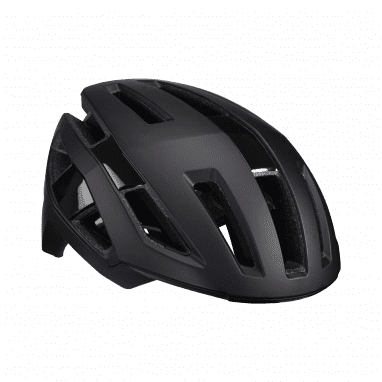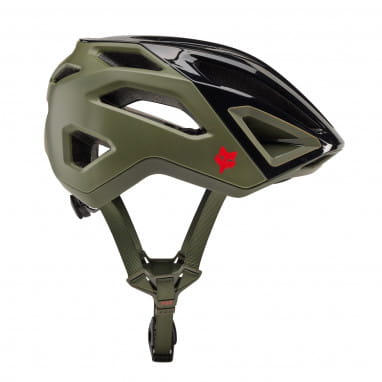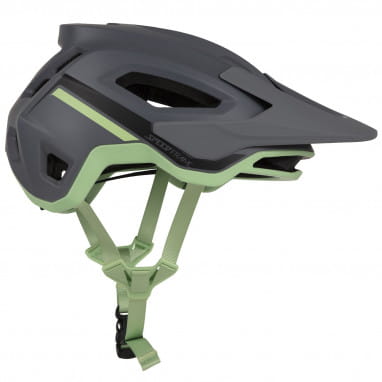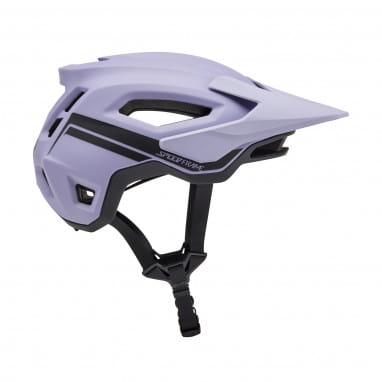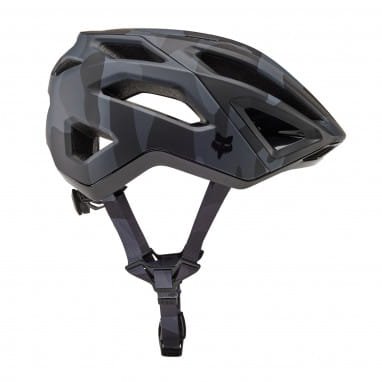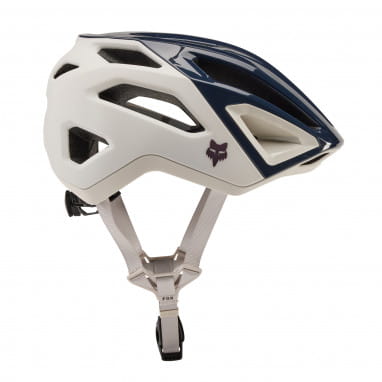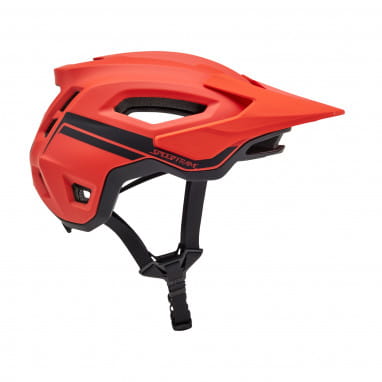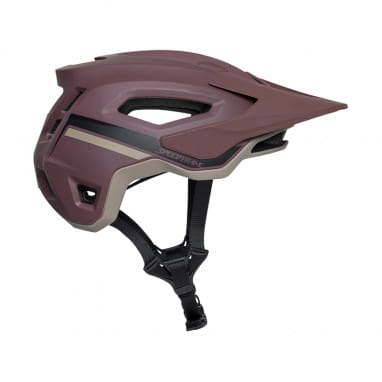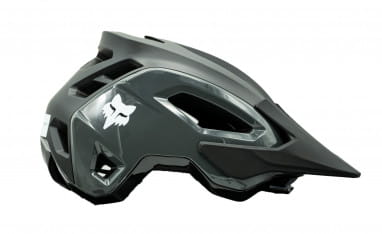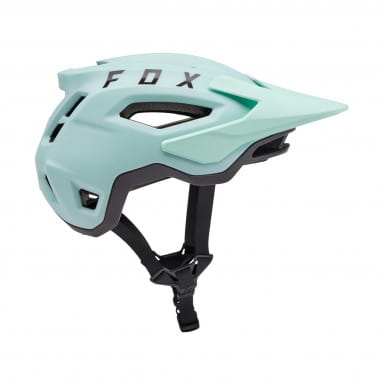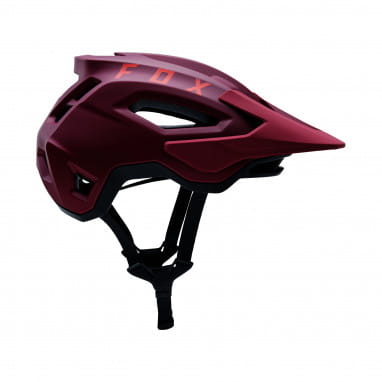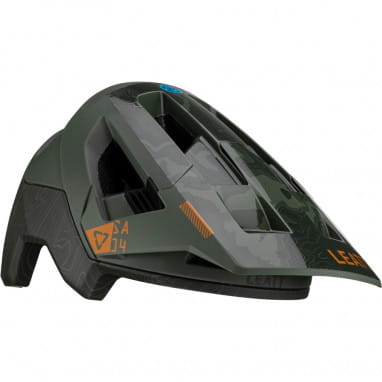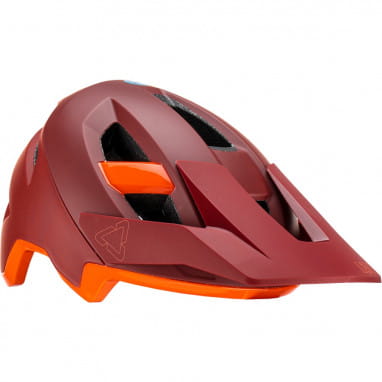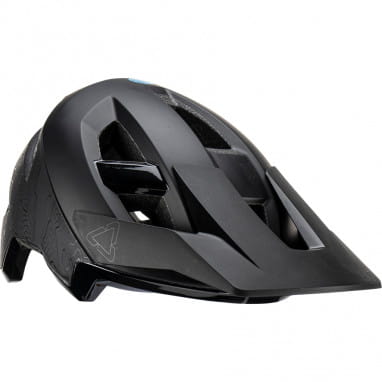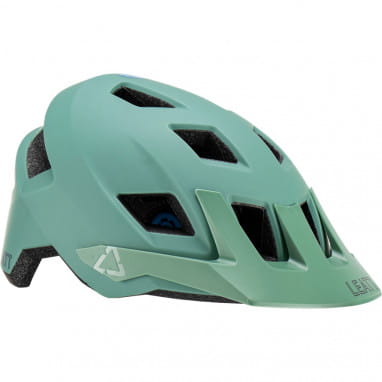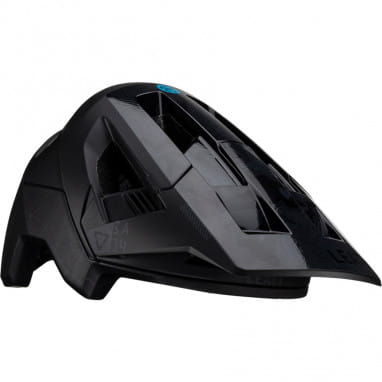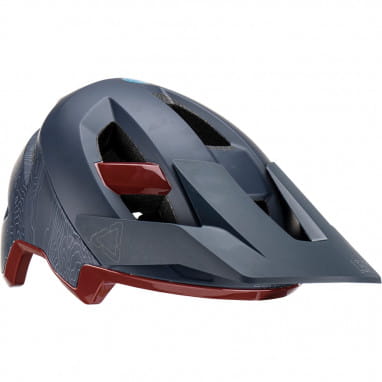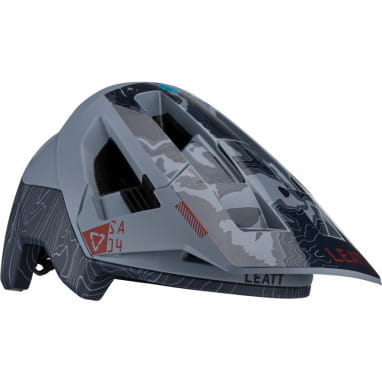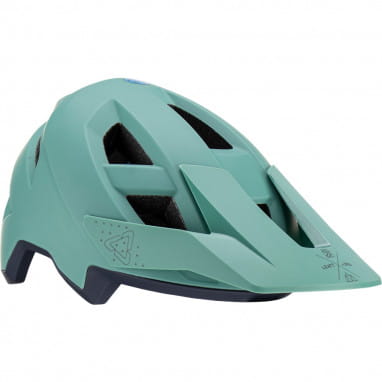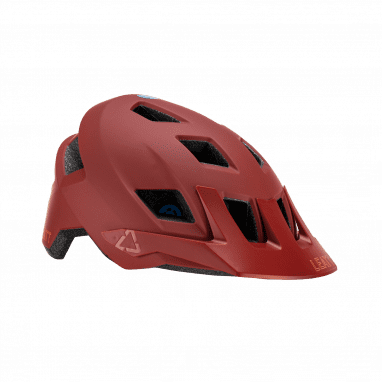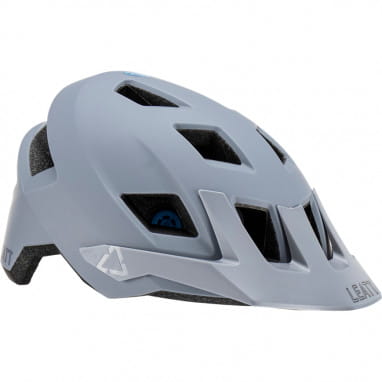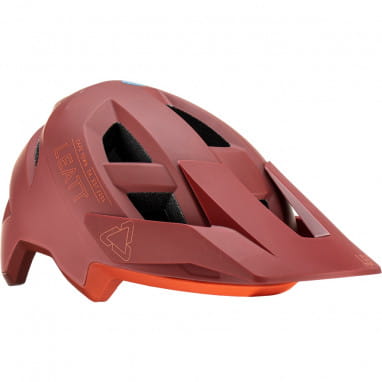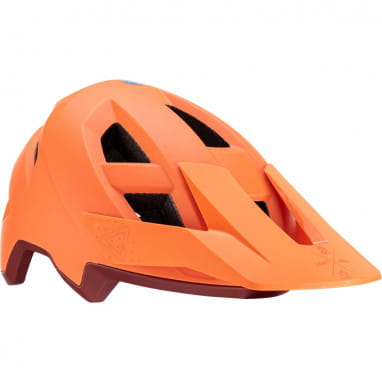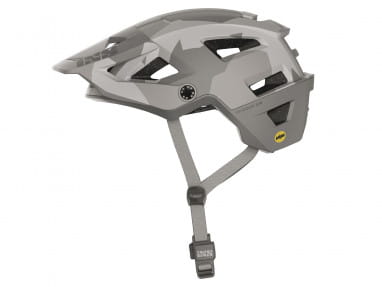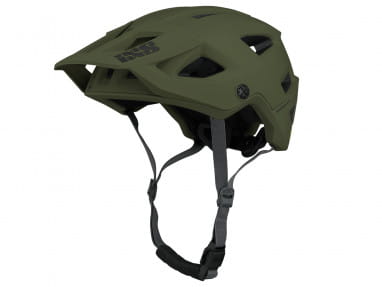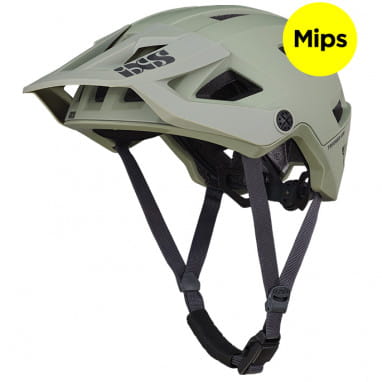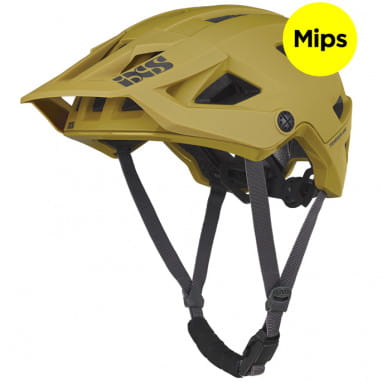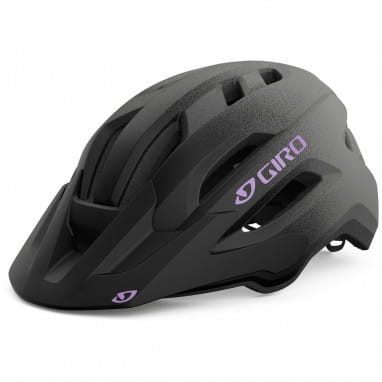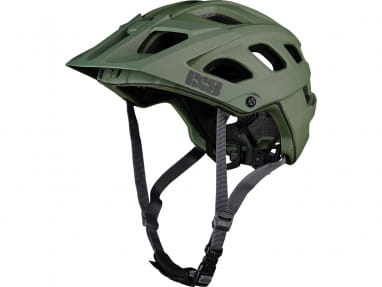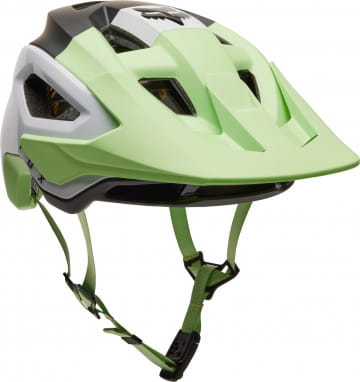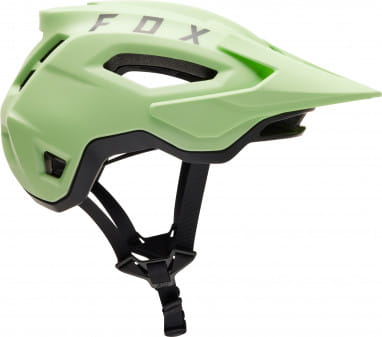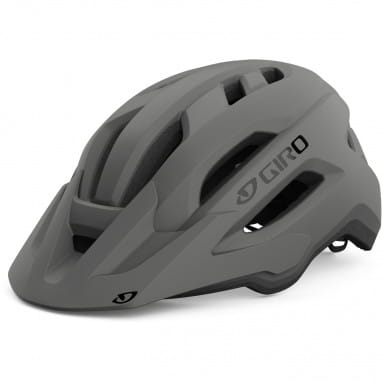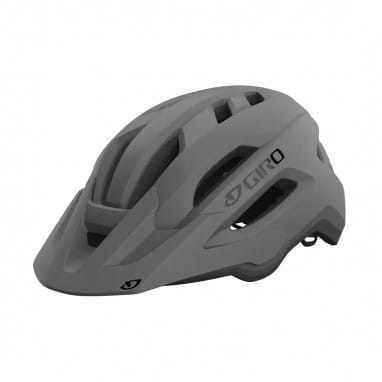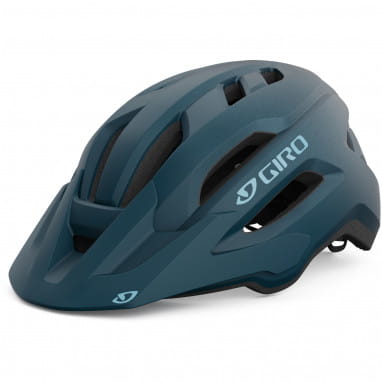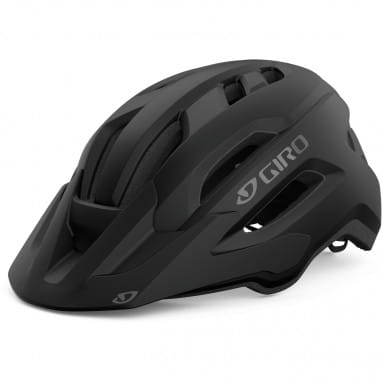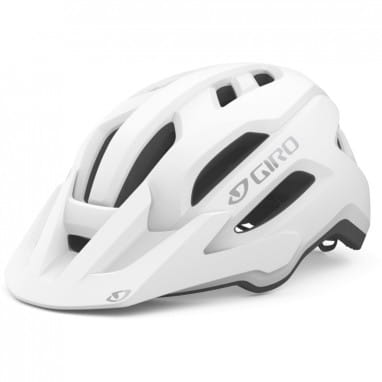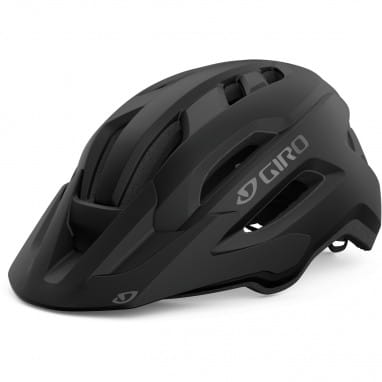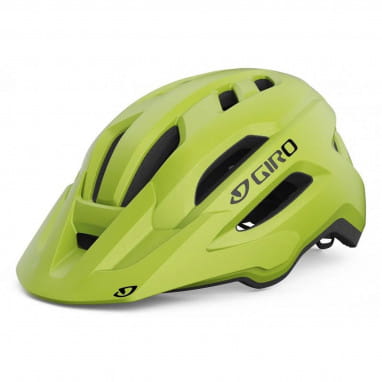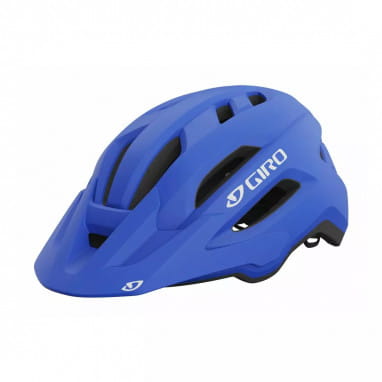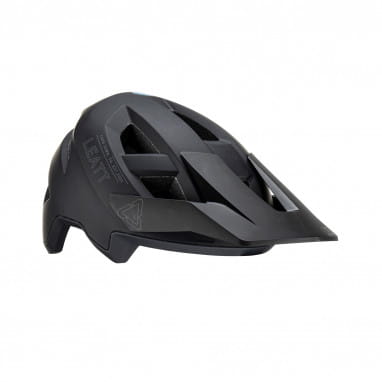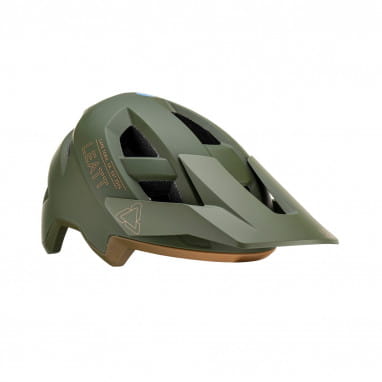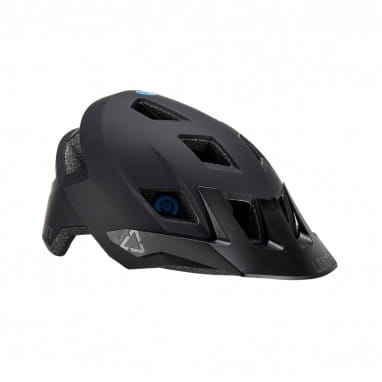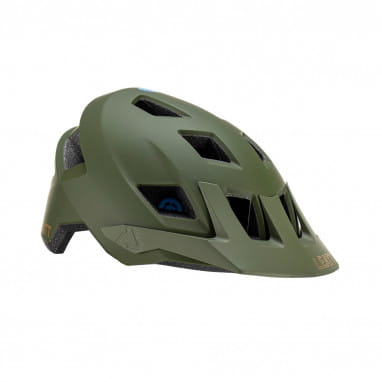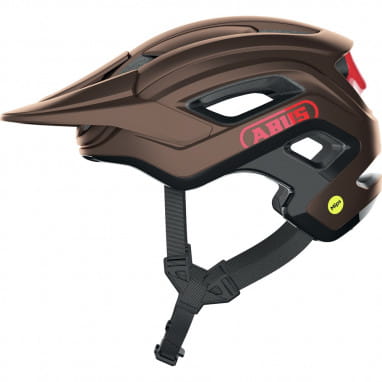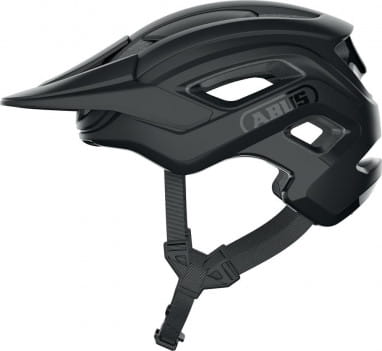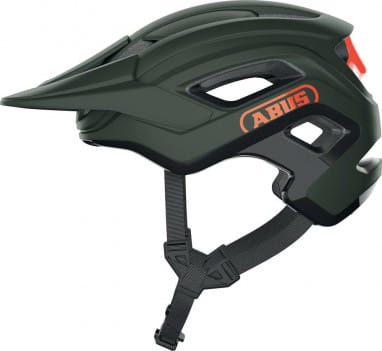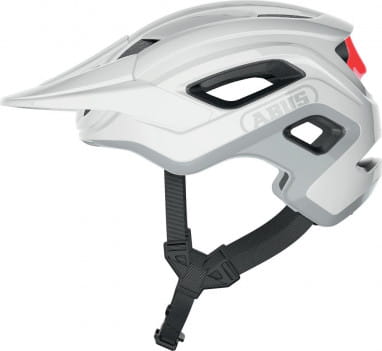The more you challenge yourself and your bike, the more layers of protection you should put on. The most important piece of your armor is the helmet, no question about it. A broken arm is painful, but manageable. A head injury, on the other hand, is usually no joke. A proper helmet will give you the best protection against skull humming.
Half-shell, full-face or combination helmet
Quite roughly, there are three different types of MTB helmets that are of interest to mountain bikers: Half-shell helmets, full-face helmets, or the combination of both. Half-shell helmets cover the top of the head, the side of the skull, and the back of the head. Full-face helmets, downhill helmets, or full-face helmets also protect the face in crashes with a massive chin bar. In some helmets, this chin bar can be attached or removed as needed, these combination helmets are especially popular with versatile bikers who compete in all disciplines. Even downhill bikers who do not use the lift for the way uphill have more fresh air with such a helmet uphill, but the greatest possible protection downhill.
Mountain Bike Helmets for Downhill
In downhill you not only sweep over the toughest terrain, those who ride downhill seek the rush of speed! So much speed requires maximum protective gear, downhill helmets and helmets for freeriders therefore have significantly more material than other helmet variants. If you don't want to go for a full-face helmet right away, you should at least buy a half-shell helmet that also covers the neck. Make sure your MTB helmet is compatible with a neck brace, if you have one.
Enduro Helmet
Enduro helmets are right in the middle between full-face helmets and XC helmets. They reach far down the neck, covering the forehead, temples and top of the head, with a wide shield protecting the eyes. Enduro helmets offer good protection for off-road biking action, as long as you don't build up too much speed in the process.
MTB helmet for XC and marathon
When it comes to marathon or cross country biking, it's the miles you ride that count, not the metres of altitude you fly. Here, the risk of an all-round head injury tends to stay within bounds, so helmets for long-distance mountain bikers aren't quite as expansive as other models. They cover the top of the head and the temples, but are not quite as low in the neck, which makes them much lighter than other MTB helmets. Like most mountain bike helmets, they have a shield that protects the field of vision from the sun and vegetation.
Important Tips for MTB Helmet Buying
There are a few points you should consider when buying a new MTB helmet.
How to order an MTB helmet in the right size
To make sure you order a mountain bike helmet that will fit you, you need to measure your head circumference. With a tape measure or a thread is measured from the forehead over the temples to the widest part of the back of the head, the measurement result is your head circumference. You can then select the appropriate head circumference at our MTB bike helmets in the shop during the order. Most helmets fit for spans of a few centimeters, they are divided into different helmet sizes from 50 to 64 cm. Although many manufacturers divide their helmets into sizes like S, M, L, or XL, you should additionally always pay attention to the centimeter measurements, because unlike clothes, bicycle helmet sizes are not assigned uniformly. If you buy your helmet according to centimeter specifications, it will surely fit.
By the way, there are rarely women's MTB helmets and helmets for men, most MTB helmets are unisex models and therefore suitable for all genders. However, there are children's bike helmets and also MTB helmets especially for kids. Here in the online shop you can get MTB helmets in mini format in many sizes and colors.
Invest in trusted brand-name parts
It doesn't always have to be the best and most expensive brand-name products; for many bike accessories, a budget-friendly option is perfectly adequate. However, this is not true for a helmet, especially a mountain bike helmet. The longer and more often you ride your downhiller, enduro or XC bike, the crappier an inferior helmet can feel. However, a high-quality brand helmet only really shows its superiority when you land on it. The more top safety tech you have around then, the better. Here in the shop you can buy helmets from excellent brands like Giro, 100%, Fox, Bell, IXS and Giant order.
Standards, product tests and seals
There are numerous standards that check whether a bicycle helmet meets certain safety standards. The EU standard EN 1078 marks compliance with the legal requirements for bicycle helmets. For children's helmets, the extended EU standard EN 1080 applies. Since many items come from the USA, especially for mountain bike equipment, you can look for the ASTM F1952-15 and ASTM F2032-15 testing standards. These are even stricter, as they were especially developed for downhill and BMX helmets. To ensure even more safety, some manufacturers now even have their bike helmets tested to the EU standards for motorcycle helmets . In addition, many helmets carry a TÜV seal and the CE mark. In the BMO online shop you can also find the winners from the numerous war tests that put helmets through their paces.
Washable interior
Lower down, there's even more information on the material a mountain bike helmet is made of. At this point, just this much: make sure that the inner pads are washable. This way you will always have a hygienic and odorless head protection.
Neckbrace, GoPro, and Goggles
.
It's nice that you want to protect your head. But the real weak point is a little deeper. A neck brace protects your neck and throat from serious injury. To ensure that the helmet and neck brace fit together, you will find the corresponding note in the specifications of the helmets in our shop.
Most MTB helmets work well with goggles and sunglasses, and mountain bike helmets in particular have additional mounts and guides for the rubber straps of goggles.
Many mountain bike helmets also have mounting points for helmet cameras, you want to capture your most spectacular jumps for posterity after all, right?
.
Ventilation
If a trail helmet or a cross helmet were simply a massive bowl, sweat would quickly flow in quantities underneath. To prevent that from happening, helmets, especially for mountain biking, have numerous ventilation openings. These openings allow fresh air to flow into the helmet, channels guide the pleasant breeze around your head, at the back of the head the air then flows out of the helmet again. To help you regulate the airflow, these vents are occasionally fitted with flaps that allow you to adjust the circulation.
Weight
An MTB helmet should be as light as possible, at best you'll simply forget you're wearing a helmet at all. As with bikes, the weight goes down as the price goes up, but it's worth the investment
.
When is it time for a new helmet?
A crashed helmet should always be replaced, otherwise mountain bike helmets will last several years. But through movement, friction and UV exposure, the material fatigues, at some point it is time for a new helmet. Depending on the quality and riding performance, a new helmet is due approximately after three to five years.
How your MTB helmet fits perfectly:
- First, turn the ring that adjusts the width of the helmet all the way up. Most helmets have a twist lock at the neck for this purpose. This will give you enough wiggle room to make the other adjustments.
- Internal padding: some MTB helmets come with pads in different thicknesses that you can use to adjust your helmet. Just try out which pads make the helmet fit comfortably. It should have good contact with the head, but not press.
- Chinstraps: first adjust the clamps so that the chinstraps form triangles around your ears, then you can adjust the length of the chinstraps. Close the chinstrap and shorten the straps so that you can slide about two fingers between your chin and the straps.
- Adjust width: now use the dial to reduce the helmet width again. The helmet should now sit well on the head, but not press.
- A MTB helmet usually has a lot of material at the back of the head anyway, so there is no danger that you push the helmet too far into the neck. It is important that the helmet sits horizontally on your head, the lower edge should start at the front about two to three finger widths above the eyebrows, otherwise the helmet can not protect your face sufficiently.
Helmet Material and MIPS
.
Like any bike helmet, an MTB helmet is made up of a plastic shell, a polystyrene shell and the carrier system with a head ring and fabric pads all the way inside.
First, the outer plastic shell offers room for custom design and your favorite color. Second, it's smooth. When you land on the helmet, it slides along the bottom and doesn't snag. This protects your neck from injury. The polystyrene shell distributes the impact over the entire surface, cushioning the fall. Many MTB helmets also have a MIPS layer. The MIPS system allows the two outer layers of the helmet to slide along each other, so impacts are absorbed even better.
.
The fabric pads that are attached to the inside of the MTB helmet have several functions at once: With pads in different thicknesses, you can not only adjust your helmet, the pads also ensure a comfortable wearing feeling. This also includes that the fabric absorbs sweat, so that the helmet does not feel wet and sweaty. So that your helmet does not smell after a short time, antibacterial fibers are often processed here, which prevent odors. In addition, the pads can be washed. But even that's not all, the small cushions of course also cushion the impact of a crash.
.
You can reorder the pads from our helmet accessories if they fray after frequent washing.
Here in the bike online shop you'll also find all the other protectors and loads of bike clothing. Have fun browsing! By the way, if your ordered helmet doesn't fit you, you can return it for a whole 100 days!
Please note that we can't assume any liability for information on laws and standards!
